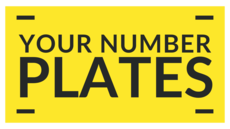1. Introduction: The Fascination with Personal Plates
Personalised number plates have long captivated British motorists. They're not just functional identifiers—they’re a form of self-expression, a nod to individuality, and in some cases, even a status symbol. With more people exploring creative ways to stand out, a common question arises: can you legally make your own number plate in the UK?
2. Understanding UK Number Plate Law
Number plates in the UK are governed by stringent laws under the purview of the Driver and Vehicle Licensing Agency (DVLA). These rules ensure visibility, consistency, and, most importantly, road safety. Deviations from the standard aren't taken lightly and can result in fines or failed MOTs. So before even thinking about DIY solutions, understanding the legal framework is vital.
3. What Counts as “Making Your Own” Plate?
The phrase “making your own plate” can mean many things. For some, it's designing the layout digitally. For others, it’s physically assembling a plate using printed materials or ordering from an unregulated seller. Any step in which the standard manufacturing process is bypassed can fall under this ambiguous umbrella—and that’s where legal scrutiny begins.
4. Legal vs. Illegal Number Plate Production
It's legal to have custom plates—but only if they’re made by a DVLA-registered number plate supplier. Producing your own plate using home materials or non-compliant online sources, even for a genuine registration number, is illegal for road use. You may design one for fun or shows, but affixing it to your vehicle crosses the legal line.
5. Who Can Legally Manufacture Plates?
In the UK, only suppliers registered with the DVLA can produce legal number plates. These suppliers must check identity and registration documentation before issuing a plate. This requirement ensures that only the rightful keeper of a vehicle can obtain replacement or custom plates, deterring theft and fraud.
6. The Role of the DVLA in Number Plate Regulation
The DVLA monitors the entire number plate ecosystem. From issuing registrations to enforcing display standards, it ensures every plate meets specifications laid out in the Road Vehicles (Display of Registration Marks) Regulations 2001. It also maintains a database of approved manufacturers—access to which is public and regularly updated.
7. Standards for Road-Legal Number Plates
Road-legal number plates must follow specific requirements:
- They must display the registration exactly as recorded by the DVLA
- Characters must be a standard font
- Spacing and alignment must follow regulated formats
- The background must be white (front) and yellow (rear) with black characters
Failure to meet any of these standards makes a plate illegal, regardless of how it was made.
8. Font, Size & Spacing Requirements
The British Standard (BS AU 145e) outlines the typographic details:
- Characters must be 79mm tall and 50mm wide
- Stroke width: 14mm
- Minimum spacing: 11mm between characters, 33mm between groups
Decorative fonts or misaligned spacing—even if stylish—are strictly prohibited on the road.
9. Materials and Reflectivity Rules
Legal number plates must be made using specific reflective materials to ensure visibility in various lighting conditions. The plate should not distort or obstruct the readability of the characters. Embellishments such as background logos, borders, or tinted film can render a plate non-compliant.
10. Can You Design a Plate and Outsource It?
Yes, you can design your number plate, but it must be printed and assembled by a DVLA-approved supplier. There are many online services that offer “custom number plate builders” with compliance in mind. After verifying your ID and vehicle documents, they will produce your plate legally and safely.
11. Penalties for Non-Compliant Plates
Using an illegal number plate carries significant consequences:
- Fixed penalty notice of up to £100
- MOT failure
- In extreme cases, vehicle seizure or prosecution
- If caught multiple times, your registration may be withdrawn altogether
It's simply not worth the risk for a cosmetic tweak.
12. Show Plates: Legal for Display, Not the Road
Show plates are often made for events, photo shoots, or garage decor. While they can be fully customised—different fonts, borders, and layouts—they are not legal for use on public roads. Drivers often mistake their legality; however, putting one on your vehicle during daily use can result in fines.
13. How to Get a Custom Plate the Right Way
If you’re looking for a unique plate legally:
- Purchase a personalised registration through the DVLA or authorised reseller
- Verify your identity and vehicle details
- Use a registered plate supplier for manufacturing
- Double-check the formatting to ensure it complies with BS AU 145e
This process ensures your plate reflects your personality—without breaking the law.
14. Future of Number Plate Regulation in the UK
Technology is transforming vehicle identification. Digital plates, tamper-proof materials, and integrated smart chips are under development. The DVLA is also exploring further automation in verifying suppliers and ownership. With an increasing focus on road surveillance, expect tighter regulations in the coming years.
15. Conclusion: Creativity Within Legal Boundaries
Making your number plate may sound like a fun project, but legality is paramount. There’s room for personal flair—but it must exist within the defined legal structure. Always use licensed channels, follow formatting rules, and avoid shortcuts. In the UK, individuality and regulation can coexist—you just have to know where the line is.

